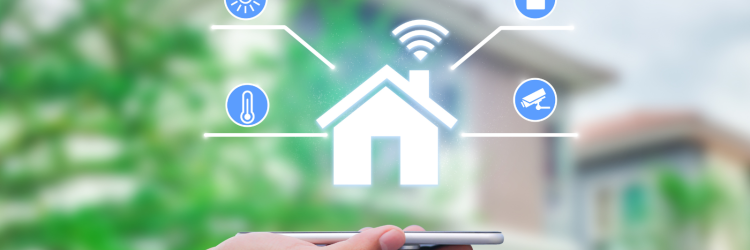Technology standards are never sexy, but they can be awfully important. You've likely never heard of 802.11b, but it unleashed a revolution in how we and all our devices communicate when the Institute of Electrical and Electronics Engineers released it in the late 1990s. You know it as Wi-Fi.
An industry group has now rallied the major players involved in smart homes and produced a software standard that lets all their devices talk to each other as effortlessly as your computer links to the cloud. You will now be able to see and use your devices woven into a network rather than as a series of individual devices.
The real innovation begins now.
The rollout of the standard, called Matter, has been in the works for a while. Here is me writing about it when it was announced a year and a half ago: "Smart Homes Are Finally Getting Smarter." What's new is that devices supporting the standard have been steadily introduced for almost a year and that there has been a flurry in recent weeks, suggesting that Matter has achieved liftoff. According to the Connectivity Standards Alliance, the group that developed Matter, more than 1,800 applications and devices have been tested and approved to support the standard.
A headline in the Wall Street Journal last week declared, "It's Finally Time to Add Some Smart Tech to Your Dumb Home." The article begins: "Up to now, the defining feature of most smart-home technology has been that no normal person should buy it.... But finally, we are at what promises to be a breakthrough moment."
Whether that breakthrough happens depends on the creativity of those who develop and deploy the technology -- and the insurance industry has been playing an important role because of the potential for smart homes to prevent damage from water leaks and fires and to head off burglars.
On the carrier side, State Farm has been the most aggressive. It announced a year ago that it had purchased 15% of ADT, the home security company, for $1.2 billion and was going to put $300 million into an "opportunity fund" for further innovation.
State Farm also announced early this year that it was offering homeowner clients a free sensor called Ting, from Whisker Labs. The device plugs into a wall socket and monitors the electricity flows in the whole house or apartment, spotting anomalies that indicate danger of a fire. In the announcement with State Farm, Whisker Labs said it was mitigating or preventing 250 home fires a month -- and the rollout has just begun.
On the insurtech side, in addition to Whisker Labs, Roost offers a robust set of sensors that detect water leaks, fires and home intruders. Pepper/Notion is another leader, providing inexpensive devices about the size of hockey pucks that can be distributed through a home, apartment or building in spots where leaks are most likely to occur.
(If you're interested in more detail on what the industry is doing, check out a recent article we published, "How Smart Homes Are Changing Insurance" or the less recent but still very informative "Connected Insurance Comes of Age.")
What changes now for insurers and their customers is that everything becomes more flexible and easier with devices that are built to the new standard or that can be retrofitted with the Matter software. You could have window sensors from ADT to detect break-ins, a Ring front-door camera from Amazon, a fire sensor from Whisker Labs and a water sensor from Pepper/Notion, all integrated into a single app that monitors your home from your phone. You would no longer need the sort of monitoring panel that Roost, ADT and other home-security firms install in homes. And you won't have to worry about disabling your app if you switch from an Apple phone to an Android phone, because both will support the Matter standard.
From that same app on your phone, you'll also be able to control other aspects of your home. You'll be able to adjust your Nest thermostat. You'll be able to remotely control lights, in case you want to make it appear that you're home even though you and your family are on vacation. You'll be able to unlock the front door if you want a neighbor to check something for you while you're gone.
The group that developed Matter designed security into the standard from the get-go, so devices connected using it should be better protected than devices are now. That's the theory, anyway. Hackers are clever and persistent, so we'll have to see what happens.
To date, adoption of smart-home devices has been disappointing. Yes, Ring front-door cameras and Nest thermostats caught the public imagination, but that's about it for hits. Amazon thought its Echo device would make it easy for people to buy more stuff from Amazon, but it turns out that just about any purchase is more complex than, "Alexa, buy me some XYZ." Google's Home device hasn't caught on as a way to manage a home. And when Facebook tried to get users to install its cameras to enable constant video chat -- well, nobody wanted to let Mark Zuckerberg roaming around in their homes.
So there definitely needs to be some innovation if the smart-home trend is going to take off.
The good news is that, once a standard is in place, it isn't just the devices that attach to it that improve rapidly. The technology underlying the standard does, too, making it ever more robust.
802.11b was a breakthrough when it offered an inexpensive way to allow wireless communications at 11mbps (megabits per second) in the late 1990s. Some 25 years and dozens of iterations later, 802.11ax allows for speeds almost 1,000 times that fast -- and speed is just one of many vectors along which the technology has improved by orders of magnitude.
Smart homes should only get smarter from here.
Cheers,
Paul


